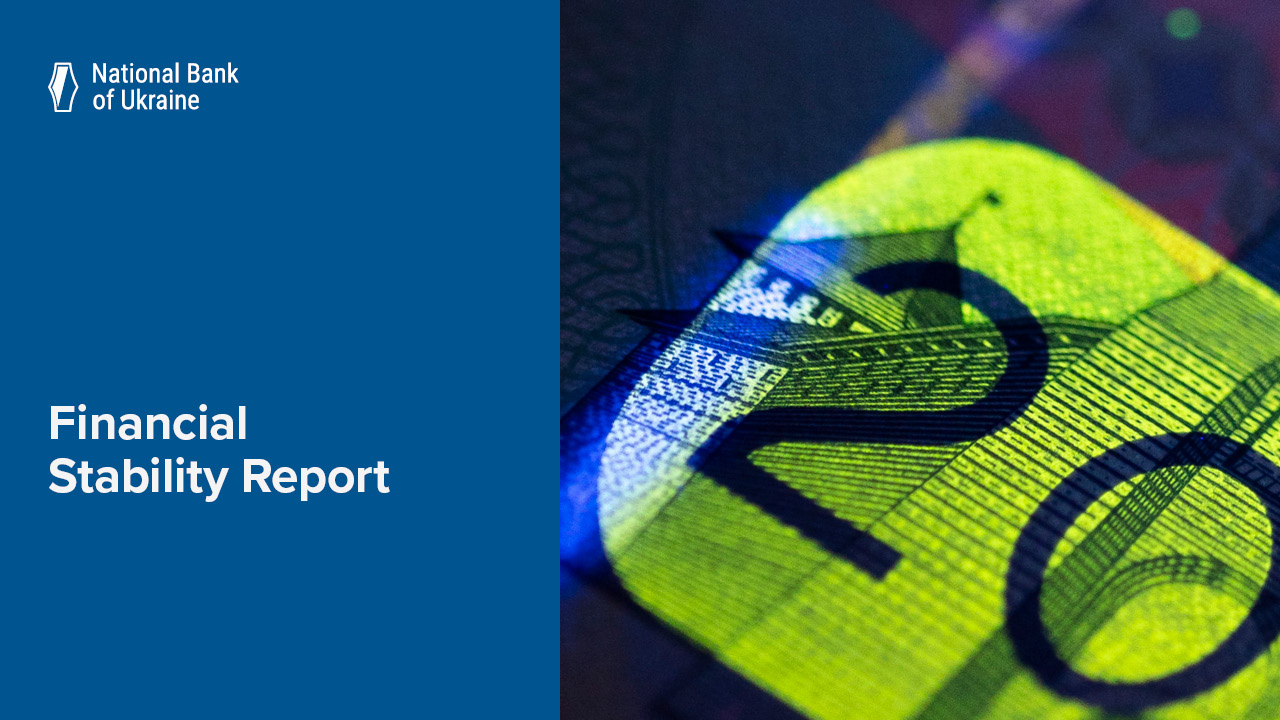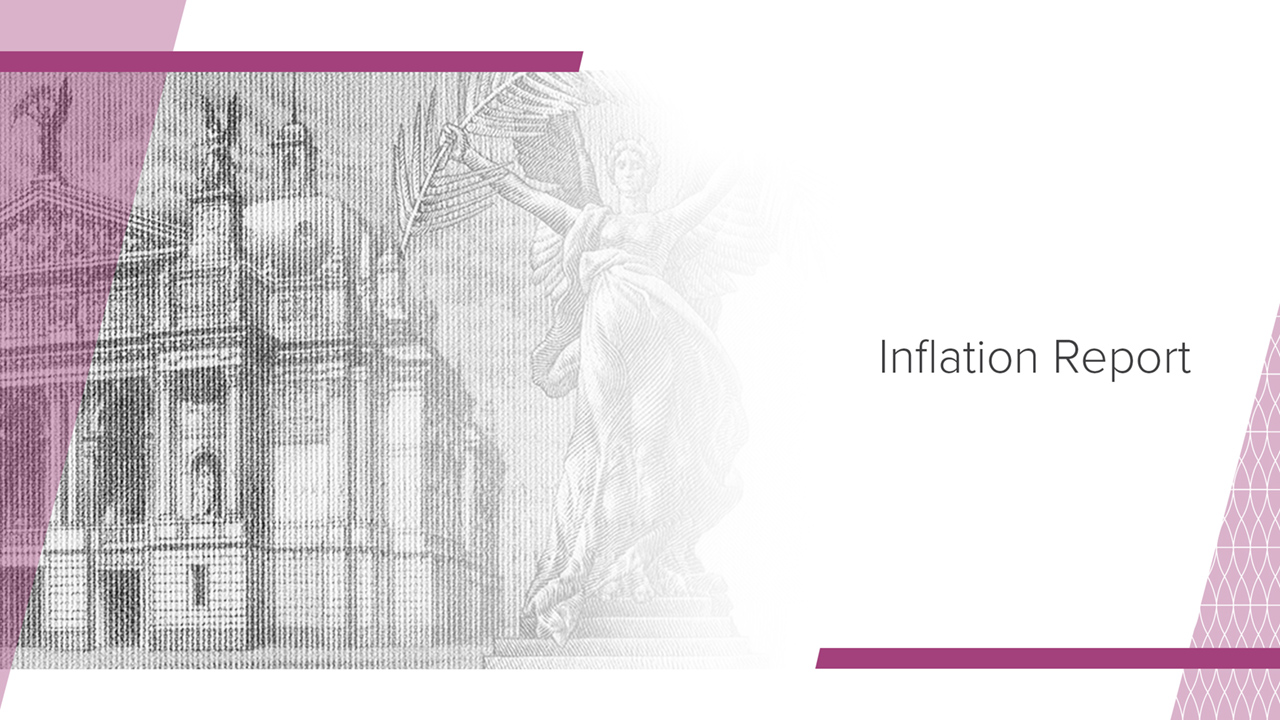Throughout most of 2020, consumer inflation will be below the 5% ± 1 pp target range. It will return to its target range at the end of the year and after that remain close to the target of 5%. Economic growth will accelerate gradually, to 3.5% in 2020 and 4% in 2021-2022. For details, see the NBU’s quarterly Inflation Report from January 2020.
The effects of the hryvnia’s appreciation in 2019 will continue in early 2020. Coupled with low energy prices, this will keep inflation below its target range throughout most of 2020. Afterwards, it will accelerate slightly and will hover around the medium-term target of 5%.
Economic growth will accelerate to 3.5% in 2020 and reach about 4% in the coming years as a result of monetary policy easing, structural reforms, and an improvement in the investment climate.
The current account deficit will hold at an acceptable level of 3%-4% of GDP in 2020-2022 on the back of a gradual pickup in the global economy and trade following the US-China trade agreement, and due to higher productivity in the Ukrainian economy. Continued foreign investor interest in the Ukrainian market and further cooperation with the IMF could see international reserves exceed USD 32 billion.
In addition to the updated macroeconomic outlook, the January 2020 Inflation Report features a number of special topics, including the following:
Revised Estimate of Neutral Interest Rate
The NBU has revised its estimate of the medium-term nominal neutral interest rate of Ukraine, from 8% to 7% per annum. The downward revision was due to a decrease in the medium-term real interest rate from 3% to 2%, reflecting an updated estimate of the equilibrium real exchange rate of the hryvnia.
According to the updated calculations, the real exchange rate was undervalued in 2015-2017. At the same time, the structural characteristics of Ukraine’s economy correspond to a stronger-than-expected equilibrium exchange rate.
The new estimate thus allows the NBU to reduce the key policy rate more than expected - to 7%. This level of interest rate marks the equilibrium of the Ukrainian economy, with inflation meeting its target and GDP and employment at their potential levels.
Macroeconomic Effects of Hryvnia Strengthening
In 2019, the hryvnia strengthened markedly against both the US dollar and the basket of currencies of Ukraine’s main trading partners. Apart from seasonal fluctuations and short post-crisis corrections in the exchange rate, the appreciation of the national currency is a new phenomenon for Ukraine.
The experiences of other countries that have managed to reduce inflation after implementing an inflation-targeting regime and gone through a period of the appreciation of their currencies show that, with a consistent macroeconomic policy, the negative effects of the appreciation are mainly short-term. At the same time, the advantages have a long-term effect and foster sustainable economic growth.
On the one hand, the strengthening of the hryvnia was the main factor that brought inflation down to the target level of 5% ± 1 pp. Low and steady inflation is a prerequisite for long-term growth, as it is the basis for business planning and greater savings. On the other hand, the national currency appreciation explains the lower hryvnia-equivalent proceeds seen from exports, have led to a loss of budget revenues. However, such consequences have another side.
The strengthening of the national currency has also reduced the cost of imported raw materials and - most importantly - the cost of investment imports, while Ukraine’s foreign trade position has not deteriorated. Ukrainian companies have become more competitive on the labor market, which is important in view of the country’s considerable labor migration.
The strengthening of the hryvnia, together with a prudent fiscal policy, was among the reasons for the rapid decline in the ratio of public debt to GDP. This in turn impacted foreign investors’ risk assessment of Ukrainian assets and the country’s sovereign ratings. As a result, the cost of new debt decreased and its currency composition improved.
Risks to the Global Economy from the Spread of Coronavirus
Early this year, the rapid spread of atypical pneumonia caused by a coronavirus provoked anxiety across the globe. The speed with which the virus spread, and the unprecedented safety measures of isolating entire multimillion-population cities created panic on the global commodity and financial markets. Taking into account previous experience and the promptness of the measures taken by the Chinese authorities, the disease outbreak is expected to have a short-term effect on both the global markets and the global economy. It will have a minor influence on both the economy of Ukraine and on the attractiveness to international investors of Ukrainian and other developing countries’ assets. However, there is a risk of a more lasting impact on the global economy. This could affect the Ukrainian economy, primarily due to worsened conditions on the financial markets during a year in which the country’s external debt repayments are peaking.
Ukraine’s State Budget 2020
The budget approved for 2020 envisages moderate growth in both budget revenues and expenditures (up by around 10% compared to the actual figures for 2019) and an almost unchanged deficit-to-GDP ratio in line with Ukraine’s commitments to the IMF.
At the same time, realization of the revenue plan could be difficult, especially with regard to tax revenues. This is mostly due to the hryvnia being stronger and inflation being lower than in the forecast used to draw up the budget. This may lead to a drop in revenues from taxes on imported and domestic goods. The revenues planned from the excise tax on tobacco products and gas production royalties are also quite ambitious.
However, there are important offsetting factors. First, extra revenues could come from Naftogaz of Ukraine (in the form of tax payments, dividends, and a portion of the company’s profit) in the wake of its receiving compensation from Russia’s Gazprom. Second, the stronger hryvnia will be beneficial for FX debt transactions.
Inflation Forecast Assessment
The actual growth in consumer prices in 2019 (4.1%) was below the NBU forecast made in January 2019 (6.3%). At the same time, inflation declined at a fast pace only later in the year. Throughout most of the year, inflation exceeded both the medium-term target of 5% and the NBU’s annual forecast. That was mainly due to a poor harvest of some vegetables and a significant increase in consumer demand, driven, among other factors, by further wage growth.
However, the NBU started a cycle of monetary policy easing in April 2019, expecting inflation to slow considerably at the end of the year. At the same time, the NBU refrained from rapidly easing monetary policy, given the high risks to the economy stemming from the presidential and parliamentary elections, delays to cooperation with the IMF, and court decisions bearing potential threats to financial stability. A sharp cut in the key policy rate could have triggered faster price growth, caused a major deterioration in inflation expectations, and undermined trust in the NBU. A number of powerful disinflation factors materialized in H2: Ukraine gathered a record harvest, and foreign investors reassessed the risk of investing in Ukrainian assets. As a result, the NBU accelerated its monetary policy easing in Q4 2019 and in January 2020. With a low-inflation environment throughout most of 2020, a looser monetary policy will support economic growth while maintaining inflation at the target level of 5%.
Publication of the Key Policy Rate Forecast: Impact on Forward Rates
In H1 2019, the financial market’s expectations of future interest rates were rather inert. In fact, expectations responded only when current changes in the NBU’s key policy rate were made. This indicates that market participants overestimated the hawkishness of future monetary policy.
The situation changed after the NBU published its key policy rate forecast in July. A decrease in uncertainty about the NBU’s actions has led to lower interest rate expectations, especially for the medium term.
The Inflation Report reflects the NBU’s view of the current and future state of Ukraine's economy, with an emphasis on inflation, which is the basis of monetary policy decisions. The NBU has published the quarterly Inflation Report since April 2015.








